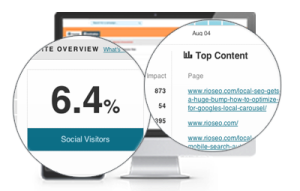“How can you know what you’re capable of if you don’t embrace the unknown?”
― Esmeralda Santiago, Conquistadora
A term coined by Alexis Madigral, Dark Social is a term used to describe a
Being the strategists we are such a realization can actually be scary. Does this mean that this whole time, we haven’t been getting a true picture of our performance? What impact does this new phenomenon have on our strategy.
The truth is, this is not really a new thing. Social media actually had its genesis in dark social. Generation X and Boomers shared a lot of information on dark platforms such as I.Ms, forums, chat rooms and emails. Remember the days when chain emails were sent to all and force you to forward or die?
Therefore what Facebook, Twitter and other social media channels did was change the situation by allowing people to publicly rather than privately share this content.
We have come to a point whereby the data we are sharing is moving across the platforms for sure and at a ridiculous rate (think Big Data). However a lot of the metadata that would allow us to optimize our content distribution strategy remains unknown.
A broad sample of new media sites were analyzed by Chartbeat and it was found that 69% of the social referrals were dark, Facebook was at 20 percent whilst Twitter was at 6 percent
So what implications does this have on our strategy?
Content Strategy
To quote Madigral, ” First, on the operational side, if you think optimizing your Facebook page and Tweets is “optimizing for social,” you’re only halfway (or maybe 30 percent) correct. The only real way to optimize for social spread is in the nature of the content itself. There’s no way to game email or people’s instant messages. There’s no power users you can contact. There’s no algorithms to understand. This is pure social, uncut…The ultimate dark social optimization is content strategy”
Social Integration Strategy
For the past few years, we have dropped the email share button from our websites. Yet this is still a very core channel when it comes to dark social. This is especially important for online properties that have sensitive content (or otherwise) that people are not comfortable sharing publicly.
Measurement of 360 integration
We are always excited to know how various channels have influenced each other. That’s why things such as trackable URLS and QR codes have been embraced so widely. However for a long time we assumed that direct traffic was a result of above the line and below the line communication. This is because we’d assume that anyone that saw the ad would type in the link directly on the browser.
However this isn’t always the case. Links clicked through from dark social are also detected as direct traffic. Luckily there’s a simple way to distinguish the two. Longer URLS are less likely to have been fed directly to the browser hence would be from dark social. Shorter URLs are probably what was stated on the offline channels. Google analytics allows for filters that distinguish these two thus giving you a more accurate picture of what traffic was driven to your site by offline messaging.
That said despite the fact that there’s a still a lot of figuring out that has to be done around this unknown data, it is clearly something that needs to impact our strategy in one way or another.
If you are still in doubt ask yourself why Facebook would pay a staggering 19 billion dollars for Whatsapp. Two words, Dark Social.
——x——-




